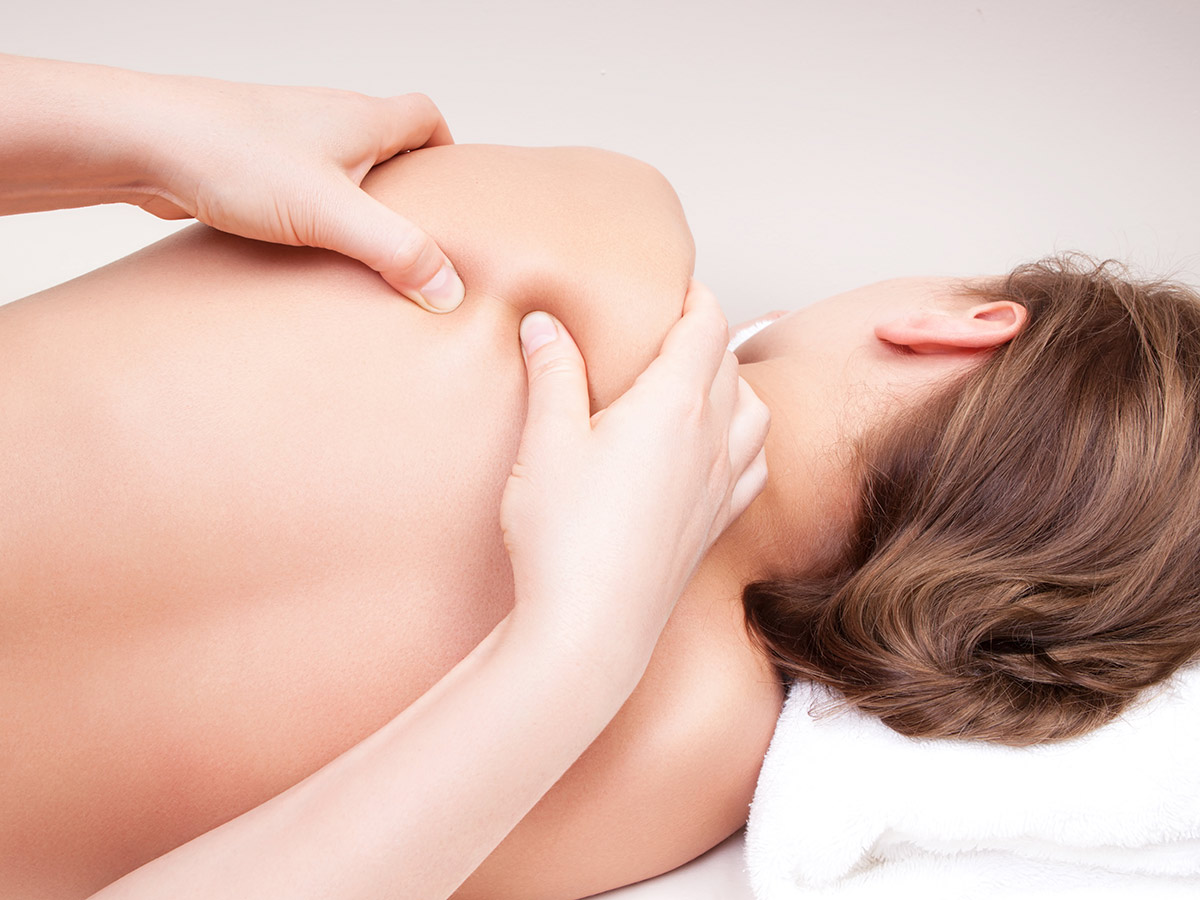For people suffering from chronic pain and muscle tension, daily activity can become almost unbearable. Athletes who place a high demand on their bodies can lose their endurance and ability to perform optimally, while individuals suffering from pain related to an injury or common condition such as arthritis and lower back pain can struggle with the most routine of tasks.
For years, massage has been used as an effective way to treat physical pain and relieve tension. Deep tissue massage has been proven to be a massage technique most suitable for the treatment of common injuries. Learning how to do deep tissue massage can help you treat injuries with confidence and provide you with the knowledge to effectively massage the body to relieve tension and pain.
What is deep tissue massage?
Deep tissue massage is a massage technique used to treat musculoskeletal issues such as muscle strains and sports injuries. Deep tissue massage is also great for treating common injuries and a range of soft tissue conditions. It involves applying deep and sustained pressure to the inner layers of muscle and connective tissue. The use of slow, deep strokes helps to break up scar tissue that forms after an injury and relieves tension and inflammation.
At the beginning of a deep tissue massage, the therapist will apply light pressure to warm up and prepare the muscles. They will then use a combination of techniques, including:
- Longitudinal strokes: Applying gliding deep pressure along the length of the muscle fibers;
and
- Friction: used to apply pressure across the grain of a muscle to release adhesions and realign tissue fibers.
Massage therapists may use the fingertips, knuckles, forearms, elbows and hands during a deep tissue massage. These manual techniques will be used for myofascial and positional release, trigger point therapy, and passive and active methods to improve range of movement and improve alignment and posture.
Most deep tissue massage focuses on the major muscle groups such as the neck and lower back, but can also be applied to the joints and tendons susceptible to straining and injury (such as the elbow and wrist) as well as to areas that can knot up due to injury, tension or stress (such as the shoulders, hips, legs and feet).
What are the benefits of deep tissue massage?
Deep tissue massage benefits patients by reducing their physical pain and discomfort. The specific conditions that appear to respond very well to deep tissue massage techniques include:
- Chronic back pain
- Headaches
- Neck pain
- Shoulder pain
- Tennis elbow/golfer’s elbow
- Jogger’s heel
- Leg muscle tightness
- Hip flexor pain
- Arthritis
Deep tissue massage has also been shown to lower high blood pressure and reduce symptoms of stress and anxiety. Massage therapy, in general, improves relaxation by lowering cortisol levels and boosting the production of oxytocin, creating a soothing effect on the mind and body.
For athletes, deep tissue massage helps to improve recovery & performance by boosting lactate clearance, reducing delayed onset of muscle soreness (DOMS), preventing injury, and helping to aid muscle fatigue.
Functionally, deep tissue massage can help improve a person’s:
- Flexibility
- TMJ and jaw pain
- Circulation
- Hip and shoulder range of motion
- Body posture and alignment
Why you should learn the techniques of deep tissue massage
If you’re serious about taking your massage career to the next level, then you should learn to perform deep tissue massage. An in-depth deep tissue massage course will provide you with the skills to treat common injuries such as sprained wrists and ankles, chronic back pain, jaw problems and pain associated with habits like jaw clenching and teeth grinding, as well as tennis and golfer’s elbow.
As a massage therapist, being well-trained and accredited in deep tissue massage means that you can treat a wide range of clients, including athletes and sports professionals. Specialized techniques such as stripping and friction can be harmful if not administered properly, so it’s essential to learn these strokes along with other unique and distinctive techniques to deliver optimum relief and relaxation to the client.
Learning deep tissue massage will allow you to address a variety of common complaints and be able to perform a deep tissue session at an intensity level best suited to the specific complaint or ailment, and the client’s pain threshold.
Because deep tissue massage is so specific, the massage therapist must have a deep understanding of anatomy and physiology. They should also be familiar with all the body’s muscles, bones and connective tissue and how they interact with one another. The massage therapist should also be able to school the client on the body’s healing process and teach them how they can perform their daily activities safely and in a way that doesn’t exacerbate the injury.
Deep tissue massage is an essential technique to learn, not just to accelerate your career as a massage therapist but to also be competent in providing relief for family and loved ones who may be suffering from chronic pain or muscle strain.
Become skilled in deep tissue massage
If you want to upskill and become qualified in deep tissue massage, then Discover Massage Australia’s ‘Deep Tissue Massage for Common Injuries’ course is for you. Recognised by the Massage Association of Australia (MAA), and the International Institute for Complementary Therapists (IICT), this self-paced course will arm you with the skills needed to effectively massage the entire body. Best of all, you can now opt to do this course online through the Discover Massage Australia Online Learning Centre. Contact us on 1300 585 989 to find out more about learning deep tissue massage online.

